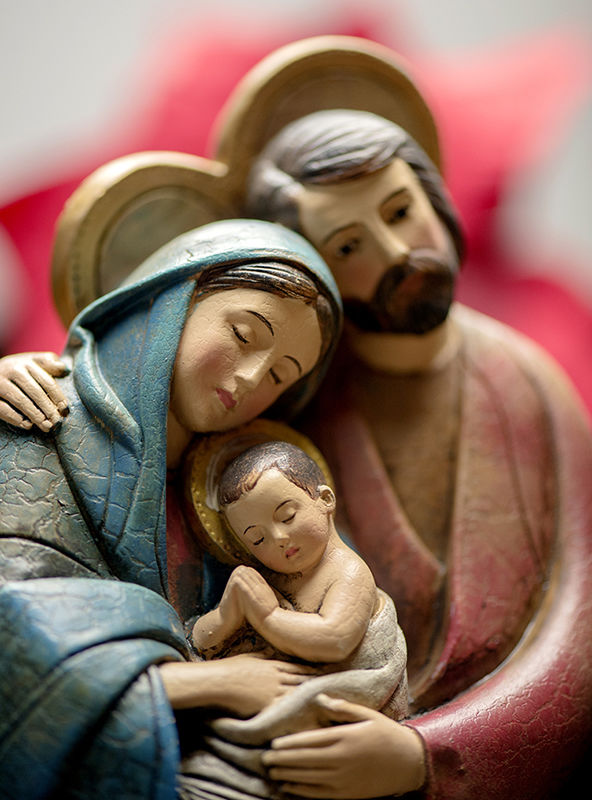The Gospel stories about the birth of Jesus are not a simple retelling of the events that took place then, at the stable in Bethlehem. In his commentaries on the birth of Jesus, the renowned scripture scholar, Raymond Brown, highlights that these narratives were written long after Jesus had already been crucified and had risen from the dead and that they are colored by what his death and resurrection mean.
At one level, they are as much stories about Jesus’ passion and death as they are about his birth. When the Gospel writers looked back at the birth of Jesus through the prism of the Resurrection they saw in his birth already the pattern for both his active ministry and his death and resurrection: God comes into the world and some believe and accept him and others hate and reject him.
For some, his person gives meaning, for others it causes confusion and anger. There is an adult message about Christ in Christmas and the meaning of Christmas is to be understood as much by looking at the cross as by looking at the crib. Hardly the stuff of our Christmas lights, carols, cribs, and Santa.
And yet, these too have their place. Jesuit Father Karl Rahner, not naïve to what Raymond Brown asserts, argues that, even so, Christmas is still about happiness and the simple joy of children captures the meaning of Christmas more accurately than any adult cynicism. At Christmas, Father Rahner contends, God gives us a special permission to be happy:
“Do not be afraid to be happy, for ever since I [God] wept, joy is the standard of living that is really more suitable than the anxiety and grief of those who think they have no hope. … I no longer go away from the world, even if you do not see me now. … I am there. It is Christmas. Light the candles. They have more right to exist than all the darkness. It is Christmas. Christmas that last forever.”
At Christmas, the crib trumps the cross, even as the cross does not fully disappear.
How do the cross and the crib fit together? Does Calvary cast a permanent shadow on Bethlehem? Should Christmas disturb us more than console us? Is our simple joy at Christmas somehow missing the real point?
No. Joy is the meaning of Christmas. Our carols have it right. At Christmas, God gives us a special permission to be happy, though that must be carefully understood. There is no innate contradiction between joy and suffering, between being happy and undergoing all the pain that life hands us.
Joy is not to be identified with pleasure and with the absence of suffering in our lives. Genuine joy is a constant that remains with us throughout all of our experiences in life, including our pain and suffering. Jesus promised us “a joy that no one can take away from you.”
Clearly that means something that doesn’t disappear because we get sick, have a loved one die, are betrayed by a spouse, lose our job, are rejected by a friend, are subject to physical pain, or are enduring emotional distress. None of us will escape pain and suffering.
Joy must be able to co-exist with these. Indeed it is meant to grow deeper through the experiences of pain and suffering. We are meant to be women and men of joy, even as we live in pain. That’s a coloring, taken from their understanding of Jesus’ death and resurrection, which the Gospel writers insert into their narratives about his birth.
But, of course, that is not what children see when they get caught up in the excitement of Christmas and when they look at the Christ-child in the crib. Their joy is still innocent, healthily protected by their naiveté, still awaiting disillusion, but real nonetheless.
The naïve joy of a child is real and the temptation to rewrite and recolor it in light of the disillusionment of later years is wrong. What was real was real. The fond memories we have of anticipating and celebrating Christmas as children are not invalidated when Santa has been deconstructed.
Christmas invites us still, as John Shea poetically puts it, “to plunge headlong into the pudding.” And despite all the disillusionment within our adult lives, Christmas still offers us, depressed adults, that wonderful invitation.
Even when we no longer believe in Santa, and all the cribs, lights, carols, cards, colorful wrapping-paper, and gifts of Christmas no longer bring the same thrill, the same invitation still remains: Christmas invites us to be happy, and that demands of us an elemental asceticism, a fasting from adult cynicism, a discipline of joy that can hold the cross and the crib together so as to be able to live in a joy that no one, and no tragedy, can take from us.
This will allow us, at Christmas, like children, to plunge headlong into the pudding. Christmas gives, both children and adults, permission to be happy.

